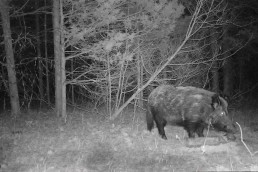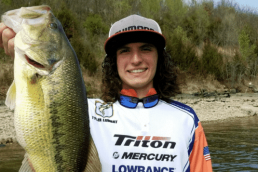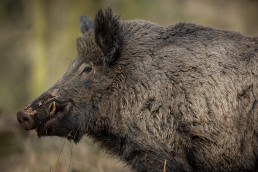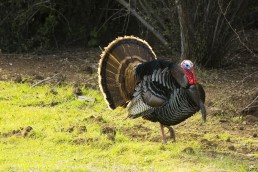MDC Continues to Address Feral Hog Problem
SHARE THIS POST
Feral hogs are a much bigger problem in Missouri than most people realize. Across much of the Ozarks, they’re causing significant damage to both private and public lands. The Missouri Department of Conservation (MDC), with help from the U.S. Department of Agriculture (USDA), is working hard to remove these invasive pests from our landscape.
“We made significant progress in 2016,” according to Alan Leary, the department’s wildlife management coordinator and leader of the feral hog eradication, in a MDC press release regarding efforts.
MDC reported a total of 5,358 feral hogs were removed in 2016, a significant increase over the 3,649 reported in 2015.
“The key to eradicating these destructive, invasive pests is cooperation with private landowners and partners in efforts to report hog sightings, continue trapping and deter hog hunting and the illegal release of hogs,” Leary said. “The majority of land in Missouri is privately owned so it’s crucial that we engage the public, educate them on the dangers of feral hogs and engage them in our trapping efforts.”
Through their communications campaign, he says more landowners are learning more about feral hogs and asking for help ridding their property of the invasive species.
Trapping is the best way to significantly impact hog populations, but it takes time and a lot of work. First, the large, corral-type traps must be built. Then they must be consistently baited for several days or weeks to attract the targeted group of hogs. You want to catch as many hogs as possible at once.
Are you enjoying this post?
You can be among the first to get the latest info on where to go, what to use and how to use it!
To build the trust of the entire wild group, a bait site takes weeks to see its effectiveness. In order to ensure traps sites are left alone from hunter disturbance, the Conservation Commission prohibits hunting of feral hogs on all lands owned, leased or managed by the MDC, meaning conservation areas, certain Army Corps lands and other public properties will now be off limits to hog hunting.
“Some hunters intentionally release feral hogs in new areas to establish populations to hunt, and hunters usually only shoot one or two hogs out of the group while the rest scatter across the landscape and become more difficult to catch,” Leary said. “Hunting actually compounds the problem.”
On my property in Shannon County, I’ve been able to regularly capture images of hogs on my trail cameras. They have destroyed a beautiful creek bottom and are costing me a lot of money by eating the corn my feeders dispense for deer. I called the department and they came out and surveyed the damage. Now they are planning to trap the area.
If you have hogs damaging your land, you need to reach out to officials, as they are taking the removal of feral hogs very seriously. The department, with the financial help of partners, has invested in state-of-the-art trapping equipment to be set up and operated on both private and public land.
Across North America, feral hogs cause an estimated $1.5 billion dollars a year in damage, including $800 million in damage to farms. Hogs are voracious eaters, and can decimate an agricultural field overnight. They outcompete native wildlife for food too. For example, a 200-pound hog will eat five times as many pounds of acorns a day as a 200-pound deer, so it doesn’t take many hogs to eliminate critical food sources for deer and other wildlife.
“In the Deep South, the battle is already lost,” said Parker Hall, an Animal and Plant Health Inspection Service scientist with the USDA. “In Missouri, we still have a chance to stop the spread of feral hogs.”
MWO
SHARE THIS POST
You may also like...
Did you enjoy this post?
You can be among the first to get the latest info on where to go, what to use and how to use it!
Brandon Butler
As past executive director of the Conservation Federation of Missouri, Brandon Butler has made a name for himself by fighting to protect fish and wildlife, and critical habitats. His syndicated column, “Driftwood Outdoors,” appears in more than 30 newspapers, weekly, across Missouri and Indiana. Reach him via email at bbutler@driftwoodoutdoors.com.



